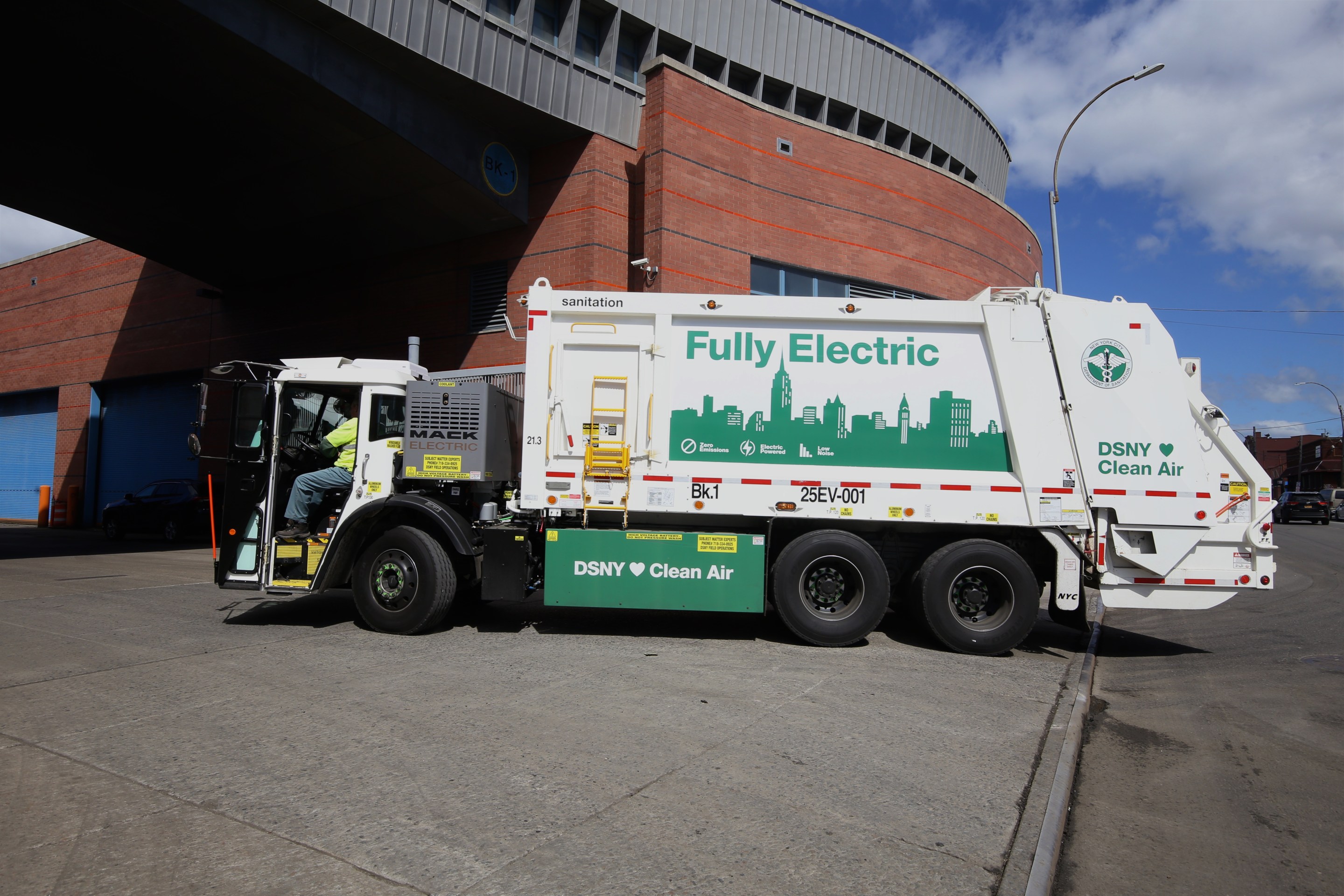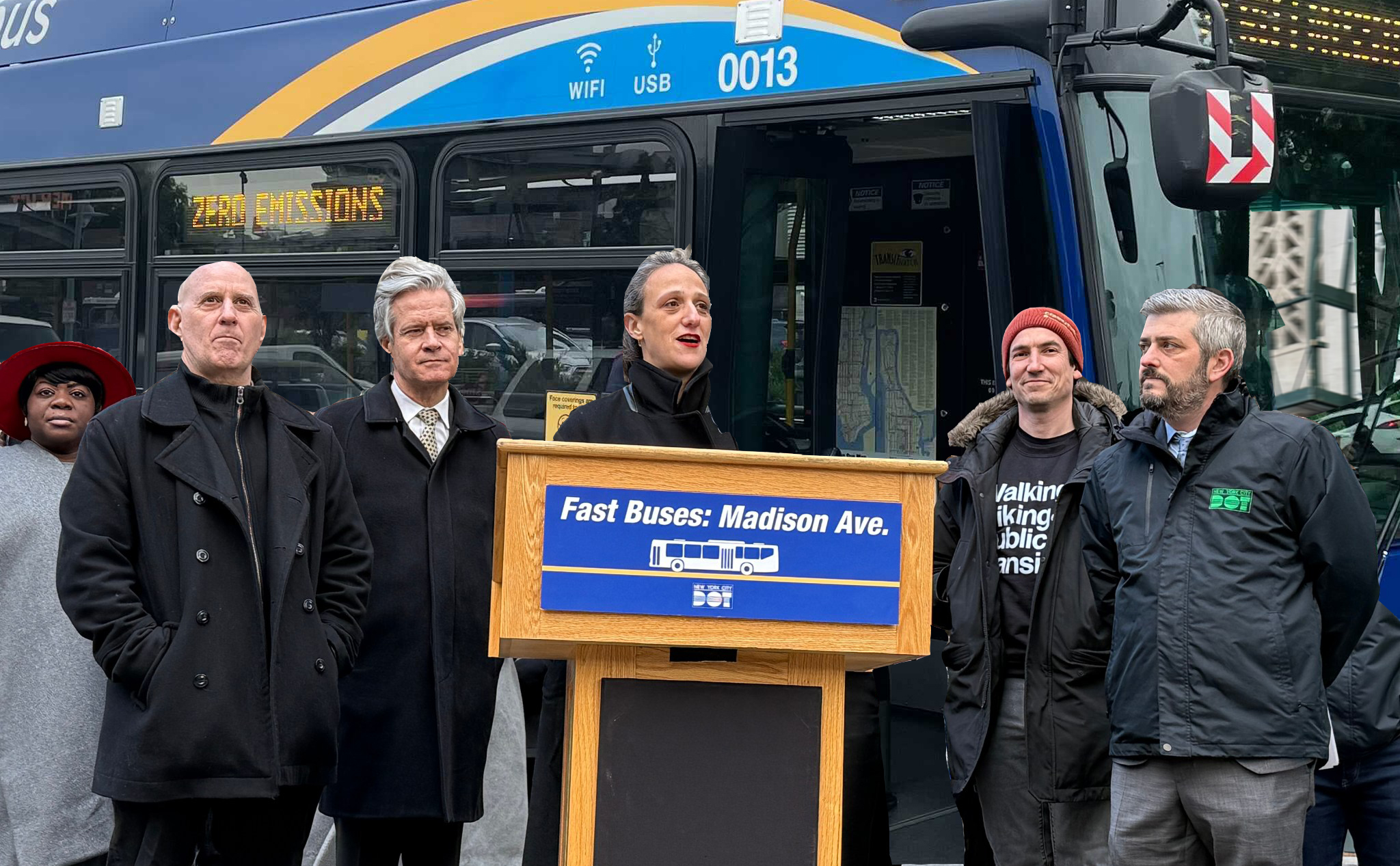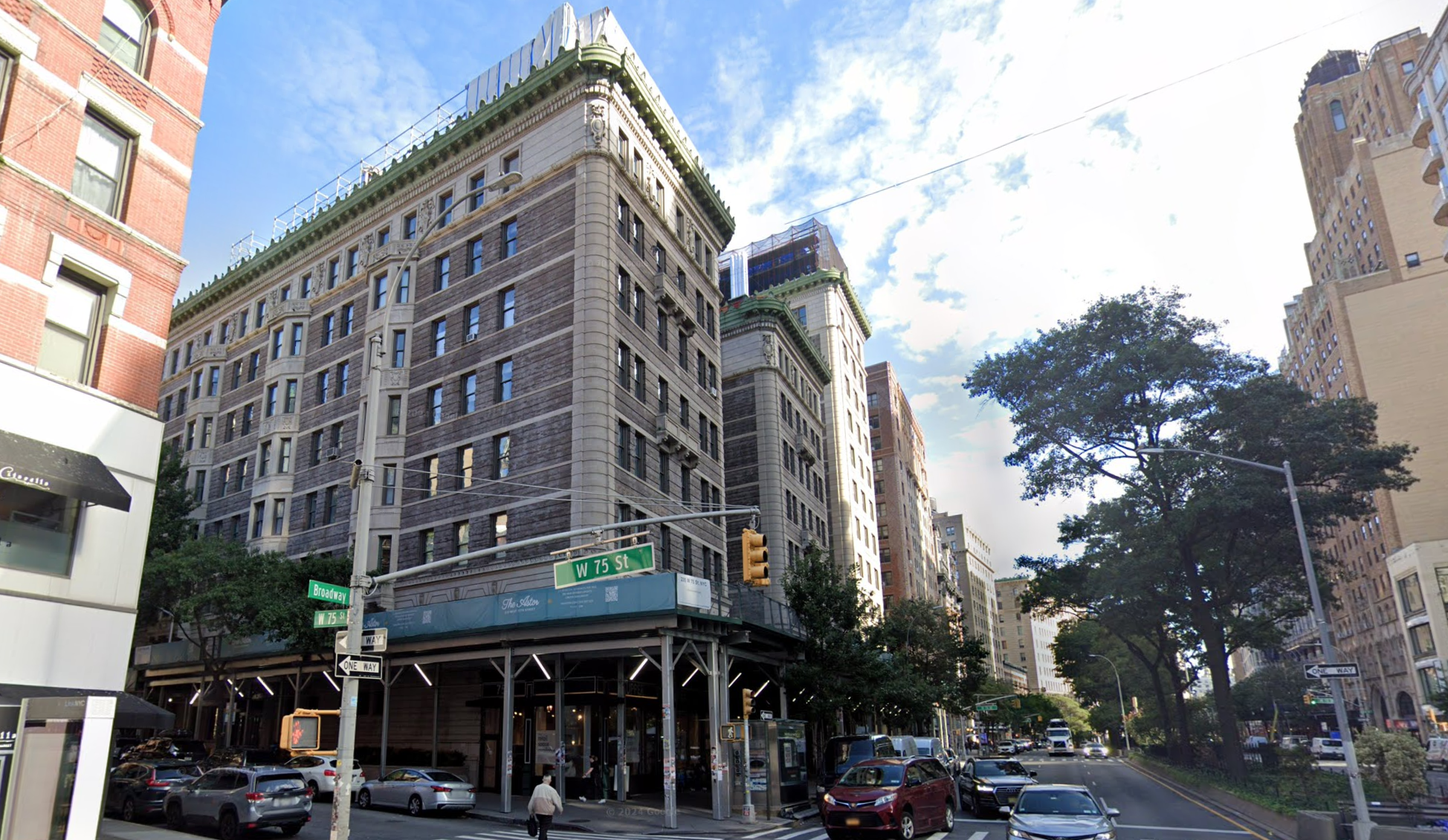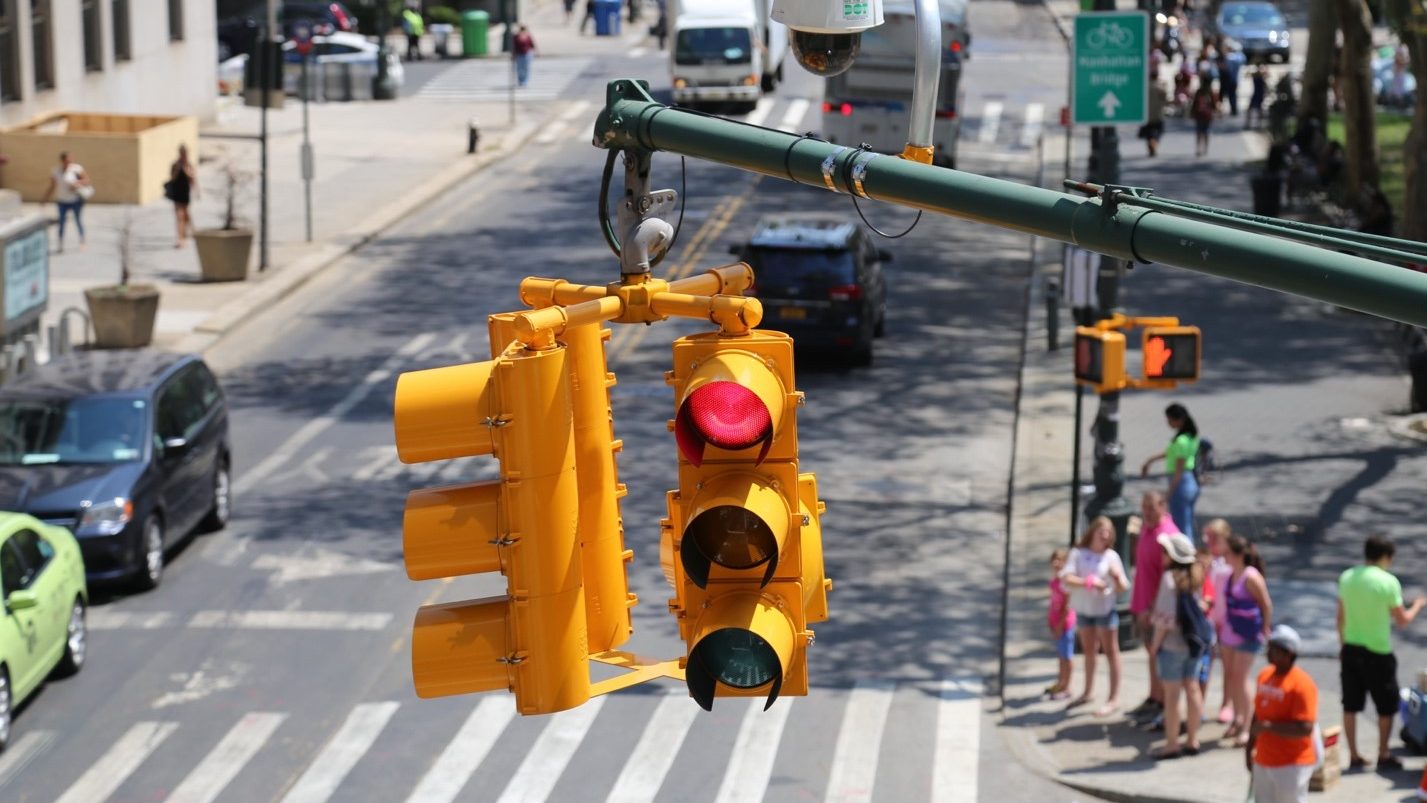They can't make it here— and perhaps they can't make it anywhere.
Electric garbage trucks that the Department of Sanitation has been testing for the past two years are not up to the task of removing snow from the streets of the Big Apple, according to the agency's commissioner.
The battery-powered trucks that New York's Strongest have been testing since 2020 only lasted a few hours on a full charge for plowing snow, a fraction of the 12-24 hours the city needs the haulers on the road — marking a major obstacle in the city's goal to fully electrify the municipal vehicle fleet by 2040.

"In our test of the non-diesel rear-loaders, we found that they could not plow the snow effectively, they basically conked out after four hours — we need them to go 12 hours," DSNY Commissioner Jessica Tisch told the City Council at a Wednesday hearing.
"Given the current state of the technology, I don't see today a path forward to fully electrifying the rear-loader portion of the fleet by 2040," she added. "Now, things could change, the technology could develop and advance, but I don't want to sit here and say to you that I see it in my crystal ball today."
Rear-loader garbage collectors make up the largest share of DSNY's 6,000 vehicles at more than 2,100 of the fleet.
The agency in 2020 began testing electric models for its collection trucks and street sweepers, and has ordered seven of each that are slated to arrive in the spring. DSNY will station two of each in Brooklyn and Queens, and one in Manhattan, the Bronx, and Staten Island.
Mack, the truck company, delivered the battery-powered collection vehicle, dubbed the Mack LR Electric, to DSNY's garage on Varick Avenue in East Williamsburg in 2020, months after then-Mayor Bill de Blasio signed an executive order stating the city's goal to make the city's fleet fully electric and carbon-neutral by 2040.
The DSNY fleet also counts 602 dual-bin trucks for collecting recyclables, 450 sweepers, and more than 1,000 light-duty vehicles like passenger cars, SUVs, vans, and pickup trucks.
New York differs from many cities in that its garbage trucks double as snow removal vehicles.
The electric trucks were specifically built for waste collection, according to a Mack spokesman, and they have been able to successfully finish a day's worth of trash collecting. But even their next generation of batteries will increase the lifetime for snow plowing to just about five-and-a-half hours per charge.
"The unit, which completed testing in May, met expectations achieving a full day’s work collecting trash. Based on that successful test, as previously announced, DSNY has ordered seven LR Electric trucks for deployment," Jonathan Randall, a Mack vice president, said in a statement. "However, Commissioner Tisch is correct: based on current technology and DSNY’s required payload, there is no current electric option available to meet a 12-hour plow duty cycle on a single charge."
Tisch was more hopeful about DSNY's mechanical brooms which have tested well with battery-powered vehicles, and the agency's light-duty stable, which includes 289 chargeable vehicles , either hybrid or fully battery-powered.
"We did great on the mechanical brooms, the tests went really well," she said. "I am hoping we can push forward on the charging front to make a lot of progress on shifting our mechanical brooms to non-fossil fuels."
The project will also require bigger charging infrastructure, especially for the heavy-duty vehicles.
DSNY currently has 13 DC fast electric vehicle charging stations at eight of its facilities, which can charge a passenger car for 30-90 miles in 10 minutes, but there could be steep costs to adding more infrastructure.
"We are working to expand that network, however, this charging infrastructure requires additional space and often new electrical utility connections that can require substantial capital investments," said Tisch.
Council Member Sandy Nurse (D-Bushwick), who chairs the Sanitation committee, lauded DSNY for investing in the new technology where it worked, especially with its smaller vehicles, but acknowledged that the challenges with larger snow plows will be tough to overcome.
"It's great that the city has made that investment with what’s available now to try," Nurse told Streetsblog. "Let’s get that done as low-hanging fruit and really effectively plan for bigger shifts with the heavy-duty vehicles that just don’t have the technology now to get us to transition easily."
The agency is also catching up on buying new fossil-fuel vehicles, after the city hit the brakes on purchasing new equipment during the pandemic, and as it is working to secure a new contractor by January.
DSNY's collection trucks have a useful life span of eight years, and the agency ideally wants the average age of its fleet to be four years, but that rate has crept up to six years due to the backlog, officials told the Council.
"There’s tremendous — tremendous — wear and tear on these vehicles. Some of the vehicles can be out, like in a snow day, like 24 hours a day," said Tisch. “On a normal collection day they could be used on like two different shifts, so they’re used all the time."
Other cities in the United States and abroad have begun trying out electric garbage trucks in recent years to reduce fleet emissions. In Los Angeles, officials have also noted the challenges of building out enough charging infrastructure to support a full city fleet.
Roll-outs have also started in European municipalities like Copenhagen, where officials in the 1.37-million-city earlier this year year ordered 10 times as many electric collection trucks as DSNY and aim to be the world's first carbon-neutral city by 2025.
Battery life has been a recurring issue for governments looking to make the all-electric switch, like with the state's Metropolitan Transportation Authority.
MTA transit leaders previously told Streetsblog that electric buses work on some of its routes, but currently can't charge up with enough power to last on some of the longer itineraries of the sprawling network.
The city of Albuquerque in 2018 had to pull the plug on its electric bus pilot in part because of lackluster battery life in the hilly New Mexico city and Neil Young talisman.






